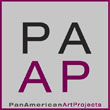« Reviews
Rob Voerman

Rob Voerman, Tarnung # 2, 2008, mixed media, wood, glass, plexi-glas, 19.6’ x 19.6’ x 9.8’. Collection artist / Courtesy Upstream Gallery, Amsterdam.
Cobra Museum - Amstelveen, Amsterdam
How to find Comfort in Discomfort
By Caridad Botella
On January 29, the Cobra Museum in Amstelveen (Amsterdam) opened the exhibition “Human Comfort,” Rob Voerman’s (Deventer 1966) first one-man show in The Netherlands. This extensive retrospective brings together large and small installations, prints and watercolors produced from 1998 to the present. We find the exhibition on the first floor of the museum. In the middle of the space, we can walk around and walk in architectural installations, video works and sculptures; surrounding these, magnificent watercolors and prints illustrate, in two dimensions, the artist’s post-apocalyptic world. Voerman’s work belongs to a centenary tradition of architects and artists, who reflect upon utopian and dystopian societies, producing for these, models of visionary architecture. We can think of, just to mention a few, Ètienne-Louis Boullée, Giovanni Battista Piranesi in the eighteenth century or closer to Voerman, Constant Niewenhuys, in the 1950s and 60s or in the past couple of decades, Joep van Lieshout.
Whether works on paper or 3D works, we cannot help but discern a tension between the title of the exhibition and our own feelings, not of comfort but of discomfort. Should we ever reach this state of dystopia, Voerman imagines and builds “shelters” made of transient materials such as cardboard, discarded wood and found objects. We can fully experience it ourselves. For example, in Tarnung #3 (2009), we enter a space that has been inhabited, where we find the remains of a bed, clothing, bottles, glasses, etc. The artist wants to offer a space that feels secure and comfortable, but at the same time disturbing. We can always look outside through stained-glass windows that remind us of churches. Voerman does not deprive men of an outside view and existence, but does force us to look with different eyes. Especially for this exhibition, the artist has made a large installation, Cinema; which is an astonishing, not only architectural, but also existential, statement. A huge construction has abruptly taken the place of a modernist, villa-like structure, which as an annex, still stands as a reference. Inside the shelter, we first encounter a lounge-like space and then a video projection of a wooden structure that extends the projection room. Again, comfort in the safe darkness of the room and discomfort, as we confront a projected virtual space which stresses the uncertainty of the situation.
Supported by the works on paper, which hang all around the exhibition space, we get a complete idea of this disturbing imaginary world. After all, it might be more real than we think. A great choice by the curator is also the two-channel video installation by Nina Fischer & Maroan El Sani, Spelling Dystopia (2009). This “side dish” of the exhibition is, without a doubt, in dialogue with Voerman’s work. “Human Comfort” is a great statement that will make the visitor leave with something to think about.
(January 30 - May 30, 2010)
Caridad Botella: Art critic based in Amsterdam. She is the director of Witzenhausen Gallery.
Filed Under: Reviews


































